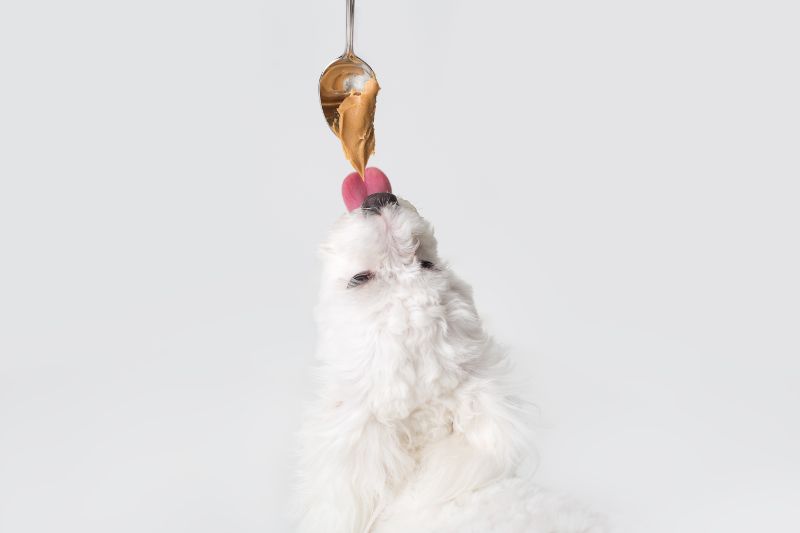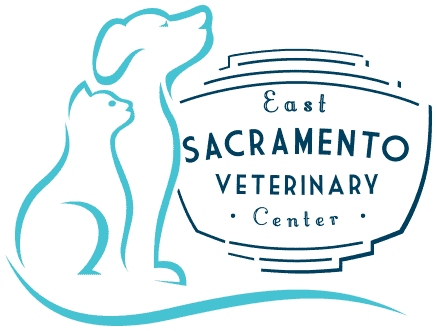Toxic Treat: Is Xylitol in Peanut Butter and Other Common Products?

Peanut butter is a popular and very common food item in most pantries. It’s also a good reward for your pet to be included in dog treats and used as Kong fillers. But did you know that your innocuous peanut butter may be hiding a deadly chemical called Xylitol?
Xylitol poisoning is one of the top ten toxins reported by Pet Poison Helpline. Each year, thousands of cases of Xylitol poisoning occur. But what is this substance and what products should you avoid? The team at East Sacramento Veterinary Center is here to tell you more about Xylitol in peanut butter and other foods and what you should do to avoid these toxic treats.
What Is Xylitol?
If you use sugar substitutes in sweets, gums, and other sugar-based products, chances are, you have ingested Xylitol. Xylitol is a sugar alcohol, a chemical that mimics sugar. The compounds in Xylitol combine sugar and alcohol molecules that make the sugar receptors in your mouth taste sweetness.
This chemical is popular due to the increase in demand for sugarless products and for those with diabetes.
Symptoms of Xylitol Poisoning
Xylitol is highly toxic to dogs as they react to the chemical in much the same way as humans, but unlike humans, are unable to metabolize it. Xylitol causes extreme hypoglycemia in canines because the chemical stimulates the release of insulin from the pancreas at a rapid rate. This then causes your pet’s blood sugars to drop to dangerously low levels.
Most reportings of poisoning occur between 50 milligrams (mg) of xylitol per pound of body weight (100 mg per kg). The more your pet ingests, the greater the toxicity and emergence of symptoms.
The symptoms of xylitol poisoning include:
- Vomiting
- Lack of coordination
- Weakness
- Depression
- Tremors
- Seizure
- Coma
These symptoms usually emerge 15-20 minutes after ingestion and should be considered a veterinary emergency. Contact us or go to the nearest pet emergency hospital.
What Products Contain Xylitol?
- Some peanut butters, especially the sugar-free kind
- Gums
- Candy
- Pancake syrup
- Sugar-free pastries
- Breath mints
- Mouth wash
- Toothpaste
- Fruit drinks
- Drink mix
And so on. Before purchasing any products containing sugar-free substitutes, check for Xylitol as an ingredient.
Treatment and Prevention
To diagnose and treat Xylitol poisoning, your veterinarian must first calculate the dosage of Xylitol and the symptoms occurring. Some of the following steps to treatment must be done to counteract the effects of the toxin.
- Monitor blood sugar levels
- If your dog is hypoglycemic, they will be given an IV of dextrose for a minimum of 12-18 hours during hospitalization to manage blood sugar levels
- Blood work will be taken to monitor sugar levels, kidney and liver function, electrolytes, etc.
- Your pet may also need intravenous supportive therapy
- Liver supports like milk thistle may also be ordered
Preventing Xylitol or any toxin from becoming ingested by your pet means being vigilant to everything you bring into the home. Also double-check sugar-free ingredients and avoid those containing this poisonous substance. Be especially wary of giving your pet peanut butter without looking closely at the ingredients.
For More Information
If you would like more information on Xylitol in peanut butter or other products, or would like to schedule an appointment, please phone us. Our goal is to keep your pet safe and healthy, and this includes providing education on those toxins in our midst.
